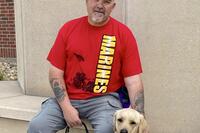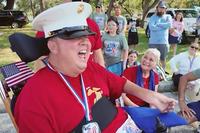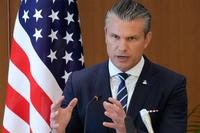When 50-year-old Paul Douglas showed up at Marine Corps boot camp in 1942, the white-haired economics professor looked more like a seasoned general than a private. Instead, he was just another recruit, running the same obstacle courses and getting the same punishment as the younger troops.
What set Douglas apart wasn’t age or rank, but the fact that he had already been a Chicago alderman, a failed candidate for mayor, and an adviser for the president. By the end of World War II, he would also be a combat-decorated Marine.
Early Life and Political Career
Douglas was born in Salem, Massachusetts, on March 26, 1892. His mother died young, and his father was abusive, prompting his stepmother to move the children to Maine. He graduated from Bowdoin College before earning a master’s degree and Ph.D. in economics from Columbia University in 1921.
His academic career took him across the country, including a post at the University of Chicago, where he worked on banking reform proposals known as the “Chicago Plan” and co-authored A Program for Monetary Reform.
Douglas also became active in politics. He advised Gov. Gifford Pinchot of Pennsylvania and Franklin D. Roosevelt when he was governor of New York. He served as an alderman in Chicago, ran unsuccessfully for mayor, and joined reformist movements such as the Farmer-Labor Party. His second wife, Emily Taft Douglas — later a member of Congress — encouraged his growing interest in politics. He attempted to win a seat in the senate, but this also failed.
By the early 1940s, his political career had stalled.

Choosing the Marines
When the U.S. entered World War II, Douglas saw an opportunity to serve his nation. Hundreds of thousands of men were drafted for the military and many volunteered. Some even lied about their age to enlist in the military before they were old enough. Douglas was at the other end of the spectrum, so he reached out to his friend Frank Knox, former publisher of the Chicago Daily News and Secretary of the Navy, asking to enlist. Knox made sure the Marines accepted him.
At age 50, Douglas reported to Marine Corps boot camp at Parris Island, South Carolina. There was no waiver for his age — he trained alongside recruits young enough to be his grandsons. Drill instructors treated him no differently, and Douglas earned the respect of the younger Marines, who saw him as both an example and a mentor.
Douglas later recalled: “I found myself able to take the strenuous boot camp training without asking for a moment's time out and without visiting the sick bay.”
After graduation, Douglas was assigned clerical work and promoted to staff sergeant within a few months. Still unsatisfied, he begged for combat duty in the Pacific. With Knox’s help, he received a commission and got his orders for the 1st Marine Division.

Combat in the Pacific
In September 1944, Douglas landed on Peleliu with the 5th Marines. His commanders initially tried to keep him away from combat, but he begged for permission to serve at the front. After receiving approval, he carried ammunition and supplies to rifle companies under fire and earned a Bronze Star for his actions. One of the Marines he resupplied was Eugene Sledge, who later recalled the encounter in his famous memoir With the Old Breed.
Douglas saw heavy action at Peleliu. While carrying flamethrower fuel, he was wounded by shrapnel and awarded his first Purple Heart. He also killed a Japanese sniper in a cave after the soldier had already shot two Marines.
Reflecting on that moment, Douglas later wrote: “As I came out, covered with mud and blood, the thought went through my head that perhaps the fellow was a professor of economics at the University of Tokyo. What a world it is that causes each of us to seek the other’s life.”
The 1st Marine Division later fought at Okinawa, where Douglas again placed himself in danger. Serving with 3rd Battalion, 5th Marines, he carried supplies, helped evacuate wounded Marines, and shared hardships with his men.
While rescuing a wounded Marine, he was struck by machine gun fire, which permanently disabled his left hand. He earned a second Purple Heart. Marines recalled him telling corpsmen to treat younger men first, even removing his officer insignia to ensure enlisted troops received care ahead of him.
Marine Pfc. Paul Ison later remembered the scene: “There, lying on the ground, bleeding from his wound, was a white-haired Marine major… He was saying, ‘Leave me here. Get the young men out first. I have lived my life. Please let them live theirs.’”
Douglas had earned the respect of the young Marines around him.
From Foxholes Back to Politics
Douglas spent 13 months recovering at the National Naval Medical Center before retiring from the Marine Corps as a lieutenant colonel. He returned briefly to teaching but soon reentered politics.
In 1948, he campaigned across Illinois, speaking in support of the Marshall Plan and civil rights. When his opponent refused to debate, Douglas debated an empty chair. He won with 55 percent of the vote and went on to serve 18 years in the Senate.
Douglas became a leading voice for civil rights, environmental protection, and housing reform. His wartime service gave him credibility on Capitol Hill, where few could question his patriotism.
Douglas published his autobiography, In the Fullness of Time, in 1971 and died in 1976 at age 84. The Marine Corps later named the Parris Island visitor center in his honor, with a plaque commemorating him as the oldest Marine recruit in history.
His legacy stretches beyond the laws he passed or the books he wrote. It is best defined by the moment the 50-year-old chose to carry a rifle and stand with his Marines in some of World War II’s bloodiest battles.















